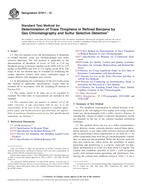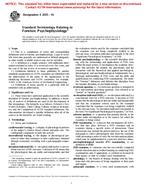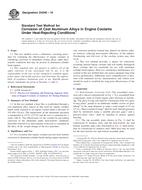1.1 This standard is for use in calculating the weight and volume of benzene, toluene, mixed xylenes, styrene, ortho-xylene, meta-xylene, para-xylene, cumene, ethylbenzene, 300 to 350°F and 350 to 400°F aromatic hydrocarbons, and cyclohexane. A method is given for calculating the volume at 60°F from an observed volume at t°F. Table 1 lists the density in pounds per gallon at 60°F for high purity chemicals.
1.2 Calculated results shall be rounded off in accordance with the rounding-off method of Practice E 29.
1.3 The values stated in inch-pound units are to be regarded as standard. No other units of measurement are included in this standard.
1.3.1 A complete SI unit companion standard has been developed in Test Method D 1555M.
1.4 This standard does not purport to address all of the safety concerns, if any, associated with its use. It is the responsibility of the user of this standard to establish appropriate safety and health practices and determine the applicability of regulatory limitations prior to use.
TABLE 1 Physical Properties
| Product | Freezing Point °F |
Boiling Point °F |
60°F Density in Vacuo g/ccA,B |
Density in Vacuo at 60°F lb/galC |
Density in Air at 60°F lb/galD |
|---|---|---|---|---|---|
| Benzene | 42.0 | 176.2 | 0.88373 | 7.3751 | 7.3662 |
| Cumene | -140.9 | 306.3 | 0.86538 | 7.2219 | 7.2130 |
| Cyclohexane | 43.8 | 177.3 | 0.78265 | 6.5315 | 6.5225 |
| Ethylbenzene | -139.0 | 277.1 | 0.87077 | 7.2669 | 7.2580 |
| Styrene | -23.1 | 293.4 | 0.90979 | 7.5926 | 7.5837 |
| Toluene | -139.0 | 231.1 | 0.87096 | 7.2685 | 7.2596 |
| m-Xylene | -54.2 | 282.4 | 0.86784 | 7.2425 | 7.2336 |
| o-Xylene | -13.3 | 291.9 | 0.88340 | 7.3723 | 7.3634 |
| p-Xylene | 55.9 | 281.0 | 0.86456 | 7.2151 | 7.2062 |
A Based on regression of 2001 TRC Thermodynamic Tables, Hydrocarbons, NSRDS-NIST 75-121 (April 30, 2001). The data is presented in Appendix X1.
B Specific Gravity has been deleted from this table as unnecessary to this standard. If needed, divide 60°F density in g/cc divided by 0.999016 g/cc. See Appendix X2.
C Produced by multiplying the density in g/cc by 8.34540438 and rounding to 4 decimal places.
D Produced using lb/gal = (Density · 1.00014992597 − 0.00119940779543) · 8.34540438, rounding to 4 decimal places. See Appendix X3.
Note – Densities (or weights) “in vacuo“ represent the true density (or weight) if measured in a vacuum without the buoyancy effect of air acting on the liquid. It is representative of the actual amount of product present. Densities (or weights) “in air“ represent what would actually be measured on a scale. The difference is on the order of 0.13 %. Modern densitometers measure density in vacuo and the ASTM and API recommend the use of in vacuo densities (or weights); however, the purchaser and seller should agree on which to use in their transactions.
Product Details
- Published:
- 06/01/2009
- Number of Pages:
- 8
- File Size:
- 1 file , 110 KB
- Redline File Size:
- 2 files , 200 KB


